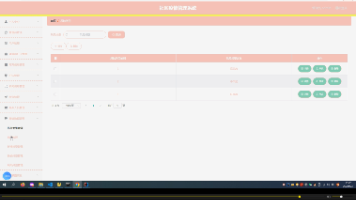一种非传统的训练-测试-验证集划分方法
原文:towardsdatascience.com/an-off-beat-approach-to-train-test-validation-split-your-dataset-esp-small-ones-650492b735fb?
确保在小数据集划分中的分布一致性
https://medium.com/@soniamarpreet17?source=post_page---byline--650492b735fb--------------------------------https://towardsdatascience.com/?source=post_page---byline--650492b735fb-------------------------------- Amarpreet Singh
·发表于Towards Data Science ·阅读时长 8 分钟·2024 年 7 月 7 日
–
使用 Microsoft Designer 生成
我们都需要对总体进行抽样,以进行统计分析并获得洞见。当我们这样做时,目标是确保我们的样本分布尽可能接近总体分布。
为此,我们有多种方法:简单随机采样(每个样本在总体中被选中的概率相等),分层采样(将总体划分为子组,并从每个子组中进行采样),聚类采样(将总体分为若干簇,并随机选取整簇),系统采样(每隔 n 个样本选择一个样本),等等。每种方法都有其优点,并根据研究的具体需求和特征进行选择。
在本文中,我们不会专注于采样方法本身,而是会介绍如何利用这些概念将用于机器学习方法的数据集划分为训练-测试-验证集。这些方法适用于所有类型的表格数据。我们将在这里使用 Python 进行演示。
以下是您可能已经了解的一些方法:
1. 简单训练-测试-验证集划分
该方法使用随机采样方法。
示例代码:
from sklearn.model_selection import train_test_split
# Assuming X is your feature set and y is your target variable
X_train, X_temp, y_train, y_temp = train_test_split(X, y, test_size=0.4, random_state=42)
X_val, X_test, y_val, y_test = train_test_split(X_temp, y_temp, test_size=0.5, random_state=42)
2. 分层训练-测试-验证集划分
该方法确保划分保持与原始数据集相同的类别比例(当然还是采用随机采样),这对于类别不平衡的数据集非常有用。当目标变量不是连续变量时,该方法有效。
from sklearn.model_selection import train_test_split
# Stratified split to maintain class distribution
X_train, X_temp, y_train, y_temp = train_test_split(X, y, test_size=0.4, stratify=y, random_state=42)
X_val, X_test, y_val, y_test = train_test_split(X_temp, y_temp, test_size=0.5, stratify=y_temp, random_state=42)
3. K 折交叉验证
在 K 折交叉验证中,数据集被切分为k个子集(折)。模型在k-1个折上训练,在剩余的一个折上测试。这个过程会重复k次。
from sklearn.model_selection import KFold, train_test_split
kf = KFold(n_splits=5, shuffle=True, random_state=42)
for train_index, test_index in kf.split(X):
X_train, X_test = X[train_index], X[test_index]
y_train, y_test = y[train_index], y[test_index]
# Further split X_train and y_train into train and validation sets
X_train, X_val, y_train, y_val = train_test_split(X_train, y_train, test_size=0.2, random_state=42)
# Now you have X_train, X_val, X_test, y_train, y_val, y_test for each fold
# You can now train and evaluate your model using these sets
4. 分层 K 折交叉验证
如名称所示,这是分层抽样和 K 折交叉验证的结合。
from sklearn.model_selection import StratifiedKFold, train_test_split
skf = StratifiedKFold(n_splits=5, shuffle=True, random_state=42)
for train_index, test_index in skf.split(X, y):
X_train, X_test = X[train_index], X[test_index]
y_train, y_test = y[train_index], y[test_index]
# Further split X_train and y_train into train and validation sets
X_train, X_val, y_train, y_val = train_test_split(X_train, y_train, test_size=0.2, stratify=y_train, random_state=42)
# Now you have X_train, X_val, X_test, y_train, y_val, y_test for each fold
# You can now train and evaluate your model using these sets
完整示例使用:
from sklearn.linear_model import LogisticRegression
from sklearn.metrics import accuracy_score, precision_score, recall_score, f1_score
# Initialize lists to store the scores for each fold
accuracy_scores = []
precision_scores = []
recall_scores = []
f1_scores = []
skf = StratifiedKFold(n_splits=5, shuffle=True, random_state=42)
for train_index, test_index in skf.split(X, y): #y is a categorical target variable
X_train, X_test = X[train_index], X[test_index]
y_train, y_test = y[train_index], y[test_index]
# Further split X_train and y_train into train and validation sets
X_train, X_val, y_train, y_val = train_test_split(X_train, y_train, test_size=0.2, stratify=y_train, random_state=42)
# Train the model
model = LogisticRegression(random_state=42)
model.fit(X_train, y_train)
# Validate the model
y_val_pred = model.predict(X_val)
val_accuracy = accuracy_score(y_val, y_val_pred)
val_precision = precision_score(y_val, y_val_pred, average='weighted')
val_recall = recall_score(y_val, y_val_pred, average='weighted')
val_f1 = f1_score(y_val, y_val_pred, average='weighted')
print(f"Validation Scores - Accuracy: {val_accuracy}, Precision: {val_precision}, Recall: {val_recall}, F1 Score: {val_f1}")
# Test the model
y_test_pred = model.predict(X_test)
test_accuracy = accuracy_score(y_test, y_test_pred)
test_precision = precision_score(y_test, y_test_pred, average='weighted')
test_recall = recall_score(y_test, y_test_pred, average='weighted')
test_f1 = f1_score(y_test, y_test_pred, average='weighted')
# Store the scores
accuracy_scores.append(test_accuracy)
precision_scores.append(test_precision)
recall_scores.append(test_recall)
f1_scores.append(test_f1)
print(f"Test Scores - Accuracy: {test_accuracy}, Precision: {test_precision}, Recall: {test_recall}, F1 Score: {test_f1}")
# Calculate and print the average scores across all folds
print(f"\nAverage Test Scores across all folds - Accuracy: {sum(accuracy_scores) / len(accuracy_scores)}, Precision: {sum(precision_scores) / len(precision_scores)}, Recall: {sum(recall_scores) / len(recall_scores)}, F1 Score: {sum(f1_scores) / len(f1_scores)}")
现在,你可以使用这些方法来切分数据集,但它们有以下局限性:
-
随机训练-测试-验证切分*😗 这种方法无法确保切分后的数据具有相似的 分布,尤其是在数据集不够大或目标变量存在不平衡时。
-
分层切分*😗 这种方法仅在目标变量(y)是非连续的时有效。虽然对于连续目标变量也有一些解决方法(例如通过某些条件将连续变量转换为类别变量,比如如果 y ≥ 四分位数 1 → 1,否则为 0),但这些方法仍然不能确保切分后的数据具有相似的分布。
现在,假设你的数据集中总的观测数较小,并且很难确保切分后的数据分布相似。在这种情况下,你可以结合聚类和随机抽样(或分层抽样)。
以下是我在我的问题上如何操作的:
5. 基于聚类的训练-测试-验证切分
在这种方法中,我们首先对数据集进行聚类,然后对每个聚类使用抽样方法来获得数据切分。
例如,使用HDBSCAN:
import hdbscan
from sklearn.metrics import silhouette_score
from sklearn.model_selection import ParameterGrid
import random
random.seed(48) #for regeneration of same results
def get_clusters(df):
to_drop =["cluster_", "ID"]
req_cols = sorted(set(df.columns) - set(to_drop))
X = df[req_cols] #keep only required columns in X
X_std = X.values #no need of scaling the training set for HDBSCAN
# Define parameter grid for HDBSCAN, you can play with this grid accordingly
param_grid = {
'min_cluster_size': list(range(2,20))
#'min_samples': [1, 2, 3]
}
best_score = -1
best_params = None
# Iterate over parameter grid
for params in ParameterGrid(param_grid):
model = hdbscan.HDBSCAN(**params, gen_min_span_tree=True)
cluster_labels = model.fit_predict(X_std)
unique_labels = np.unique(cluster_labels)
if len(unique_labels) > 1: # Check if more than one cluster is formed
silhouette_avg = silhouette_score(X_std, cluster_labels) if len(unique_labels) > 1 else -1
if silhouette_avg > best_score:
best_score = silhouette_avg
best_params = params
if best_params is not None:
print(best_params)
best_model = hdbscan.HDBSCAN(**best_params, gen_min_span_tree=True)
cluster_labels = best_model.fit_predict(X_std) #get cluster labels from best model
df["cluster_"] = [str(i) for i in cluster_labels]
else:
print("HDBSCAN produced only one cluster label. Unable to split the data.")
df["cluster_"] = "0" #when no clusters are found
return df
根据你的问题,你也可以使用其他聚类方法,例如K 均值聚类:
import matplotlib.pyplot as plt
from sklearn.cluster import KMeans
from sklearn.metrics import silhouette_score
from sklearn.preprocessing import StandardScaler
from yellowbrick.cluster import KElbowVisualizer
def get_clusters(df):
to_drop =["cluster_", "ID"]
req_cols = sorted(set(df.columns) - set(to_drop))
X = df[req_cols].values #keep only required columns in X
scaler = StandardScaler()
X_std = scaler.fit_transform(X) #scaling is needed in case of K-Means
model = KMeans()
visualizer = KElbowVisualizer(model, k=(2, 50)) #you can play with the range accordingly
visualizer.fit(X_std)
#visualizer.show()
optimal_n_clusters = visualizer.elbow_value_ #using elbow method to get optimal no. of clusters
kmeans = KMeans(n_clusters=optimal_n_clusters, random_state=42)
kmeans.fit(X_std)
clust_labels = [str(i) for i in kmeans.labels_]
# Evaluate the clustering using silhouette score
silhouette_avg = silhouette_score(X_std, clust_labels)
df["cluster_"] = clust_labels
return df
现在你还可以向数据集中添加粒度层次(任何类别变量),从而获得更精细的聚类,具体如下:
import matplotlib.pyplot as plt
from sklearn.cluster import KMeans
from sklearn.metrics import silhouette_score
from sklearn.preprocessing import StandardScaler
from yellowbrick.cluster import KElbowVisualizer
def get_clusters(df):
# taking animal categorical variable as a level of granularity to split on
grp1 = df.loc[(df['animal']=='cat')]
grp2 = df.loc[(df['animal']=='dog')]
temps = []
for num, temp in enumerate([grp1, grp2]):
to_drop =["cluster_", "ID"]
final_cols = sorted(set(temp.columns) - set(to_drop))
X = temp[final_cols]
X = X.values
scaler = StandardScaler()
X_std = scaler.fit_transform(X) #scaling of variables is needed for K-Means clustering
model = KMeans()
visualizer = KElbowVisualizer(model, k=(2, 50))
visualizer.fit(X_std)
# visualizer.show()
#get optimal no. of clusters, K using elbow method
optimal_n_clusters = visualizer.elbow_value_
kmeans = KMeans(n_clusters=optimal_n_clusters, random_state=42)
kmeans.fit(X_std)
clust_labels = [str(num) + "_" + str(i) for i in kmeans.labels_]
# Evaluate the clustering using silhouette score
silhouette_avg = silhouette_score(X_std, clust_labels)
temp["cluster_"] = clust_labels
temps.append(temp)
df = pd.concat(temps, axis=0)
return df
一旦你从任何聚类方法中获得了聚类标签,你可以使用随机抽样或分层抽样从每个聚类中选择样本。
我们将随机选择索引,然后使用这些索引来选择我们的训练-测试-验证集,如下所示:
import numpy as np
import pandas as pd
from sklearn.model_selection import train_test_split
# Assuming df is your DataFrame, "cluster_" is the column with cluster labels,
unique_clusters = df["cluster_"].unique()
train_indices = []
val_indices = []
test_indices = []
for cluster in unique_clusters:
cluster_data = df[df["cluster_"] == cluster]
cluster_indices = cluster_data.index.values
cluster_y = cluster_data['y'].values
if stratify_ == True: #if you have categorical target variable
train_idx, temp_idx, _, temp_y = train_test_split(cluster_indices, cluster_y, test_size=0.4, stratify=cluster_y, random_state=42)
val_idx, test_idx = train_test_split(temp_idx, test_size=0.5, stratify=temp_y, random_state=42)
else:
# Split indices of the current cluster into train and temp (which will be further split into val and test)
train_idx, temp_idx = train_test_split(cluster_indices, test_size=0.4, random_state=42)
val_idx, test_idx = train_test_split(temp_idx, test_size=0.5, random_state=42)
train_indices.extend(train_idx)
val_indices.extend(val_idx)
test_indices.extend(test_idx)
# Convert the indices lists to numpy arrays
train_indices = np.array(train_indices)
val_indices = np.array(val_indices)
test_indices = np.array(test_indices)
# Assuming 'X' are the features and 'y' is the target column
X = df.drop(columns=['y', 'cluster_']).values
y = df['y'].values
# Select the corresponding data for train, validation, and test sets
X_train, y_train = X[train_indices], y[train_indices]
X_val, y_val = X[val_indices], y[val_indices]
X_test, y_test = X[test_indices], y[test_indices]
根据我的使用案例,将目标变量 y 排序,然后选择每个第 1、第 2 和第 3个索引作为训练、测试和验证集,分别为(互斥的),即所谓的系统性随机抽样,如下所示:
def get_indices(df):
np.random.seed(seed=48)
total_length = len(df)
sample1_length = int(0.60 * total_length) #you can choose proportion accordingly
remaining_length = total_length - sample1_length
sample2_length = int(remaining_length / 2)
sample3_length = total_length - (sample1_length + sample2_length)
#create an array with range 0 - length of the df
all_indxs = np.array(range(total_length))
# Create arrays of indices divisible by 2 and 3 exclusively
indices_divisible_by_2 = np.array(list(set(np.where(all_indxs % 2 == 0)[0]) - set(np.where(all_indxs % 6 == 0)[0])))
indices_divisible_by_3 = np.array(list(set(np.where(all_indxs % 3 == 0)[0]) - set([0])))
#randomly choose indices divisibly by 2 with sample2_length
sample2_indices = sorted(indices_divisible_by_2[np.random.choice(len(indices_divisible_by_2), size=sample2_length, replace=False)])
try:
sample3_indices = sorted(indices_divisible_by_3[np.random.choice(len(indices_divisible_by_3), size=sample3_length, replace=False)])
except:
sample3_indices = []
sample1_indices = sorted(set(all_indxs) - set(sample2_indices) - set(sample3_indices))
return sample1_indices, sample2_indices, sample3_indices
indices_train = []
indices_test = []
indices_val = []
for num, cluster in enumerate(df['cluster_'].unique()):
temp_df = df[df['cluster_'] == cluster]
sample1_indices, sample2_indices, sample3_indices = get_indices(temp_df)
indices_train.append(list(temp_df.iloc[sample1_indices].index))
indices_test.append(list(temp_df.iloc[sample2_indices].index))
indices_val.append(list(temp_df.iloc[sample3_indices].index))
# to flatten the list of lists containing indices for train,test,val set
indices_train = [x for xs in indices_train for x in xs]
indices_test = [x for xs in indices_test for x in xs]
indices_val = [x for xs in indices_val for x in xs]
def traintestvalsplit(df, id_col, cols_to_drop, cont_var, train_indices, test_indices, val_indices):
train, test, val = df.loc[train_indices], df.loc[test_indices], df.loc[val_indices]
# Split the data into train, validation, and test sets based on indices
X_train = train.drop(cols_to_drop + [cont_var] ,axis=1) #add which columns to drop
X_test = test.drop(cols_to_drop + [cont_var] ,axis=1)
X_val = val.drop(cols_to_drop + [cont_var] ,axis=1)
y_train = train[[cont_var]] #target variable
y_test = test[[cont_var]]
y_val = val[[cont_var]]
train_ids = train[[id_col]] #to preserve the IDs
test_ids = test[[id_col]]
val_ids = val[[id_col]]
print("Train set size:", X_train.shape, len(train_ids))
print("Test set size:", X_test.shape, len(test_ids))
print("Validation set size:", X_val.shape, len(val_ids))
return X_train, X_val, X_test, y_train, y_val, y_test, train_ids, val_ids, test_ids
X_train, X_val, X_test, y_train, y_val, y_test, train_ids, val_ids, test_ids = traintestvalsplit(df, id_col, cols_to_drop, cont_var, train_indices, test_indices, val_indices)
上述将聚类与不同抽样方法结合的方式,在数据集观测数量较少时非常有用,因为它们确保了在训练、测试和验证集之间保持相似的分布。
感谢阅读,希望你觉得这篇文章有帮助!
更多推荐
 已为社区贡献278条内容
已为社区贡献278条内容









所有评论(0)